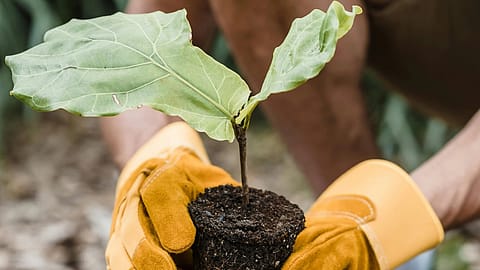India-Netherlands PPP to introduce Dutch greenhouse technology for high-value horticulture in India
The partnership will see Indian entrepreneurs and farmers use time-tested Dutch technology to build high-tech greenhouses to cultivate high-value horticultural products year-round in the country.

A for-profit public-private India-Netherlands partnership will see Indian entrepreneurs and farmers use time-tested Dutch technology to build high-tech greenhouses to cultivate high-value horticultural products year-round in the country.
The partnership, NLHortiRoad2India, on Wednesday announced that Indian companies, food delivery platforms, and agri-entrepreneurs are joining the initiative after a three-year demonstration of Dutch greenhouse horticulture technology proved to be a strong business case in Indian conditions.
The NLHortiRoad2India initiative has drawn up a blueprint for offering cutting-edge Dutch greenhouse technology, assured market linkages, farmer training and education, and a long-term financing mechanism to investors as a package to encourage entrepreneurs to adopt this cultivation practice in the country.
The partnership has already identified and onboarded three pioneering agri-entrepreneurs in Punjab, Bengaluru and Chennai, respectively, to pilot high-tech greenhouse projects. It is also onboarding Indian banks to offer innovative financing solutions to the entrepreneurs who are signing up for such projects. The pilots will be operational by the end of 2026 and will serve as proof of concept for scalable, region-specific models that can be adapted across India based on climate, crop type, and market proximity.
To begin with, the attempt will be to cultivate strawberries, cherry tomatoes and microgreens in these high-tech greenhouses. While a capsicum or cherry tomato greenhouse will require about 7.5 acres to be commercially viable, microgreens can be cultivated in a greenhouse set up on one acre of land. Even though the initial cost of establishing a typical high-tech greenhouse could run into a couple of million euros, the return on investment will be over 25% once the project takes off, the NLHortiRoad2India functionaries say.
“We are building bridges between Dutch innovation and Indian ambition for inclusive growth, enhancing food safety and climate-smart agriculture. By aligning technology with local requirements, we are unlocking new possibilities for healthier produce and resilient food systems that benefit both nations and inspire global collaboration,” said Tiffany Meijer, Co-coordinator, HortiRoad2India.
Over the past three years, the NLHortiRoad2India team has engaged with hundreds of stakeholders across India to understand the real challenges, including post-harvest losses, food safety, labour conditions, grading inefficiencies, and the lack of accessible financing.
Recommended Stories
NLHortiRoad2India not only aims to address environmental and health concerns but also enhances farmer income, reduces food waste, and elevates transparency across the supply chain. With solutions tailored for growers, retailers, chefs, and consumers, the initiative aims to drive India towards safer, more sustainable food choices.
“NLHortiRoad2India is expanding its scope to include mid- and low-tech solutions for crops with varying market values. The partnership is also fostering start-up collaborations between Indian and Dutch innovators to jointly develop technologies and establish local production units, creating employment, reducing costs, and bolstering the regional agri-tech framework across India and Africa,” said Desh Ramnath, India Director at Dutch Greenhouse Delta and Coordinator of NLHortiRoad2India.